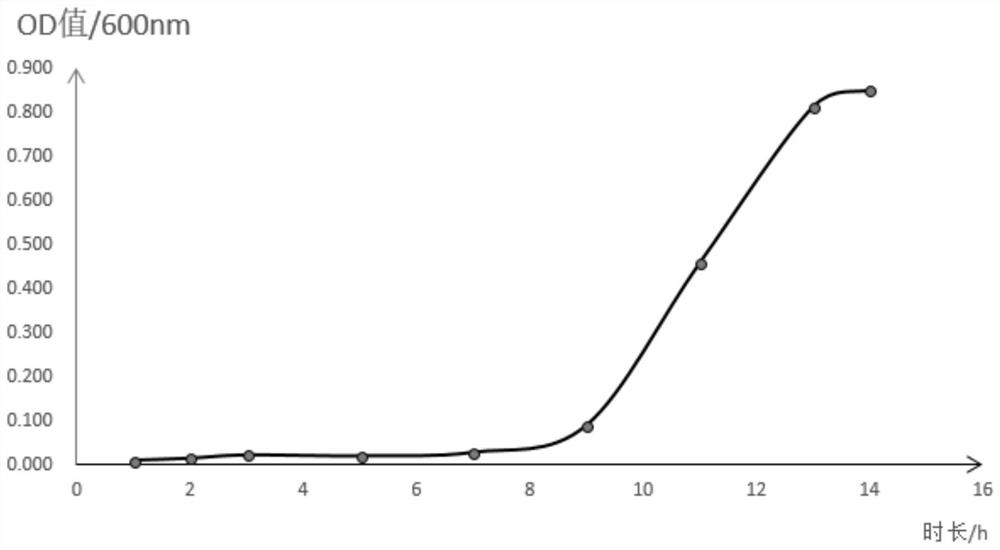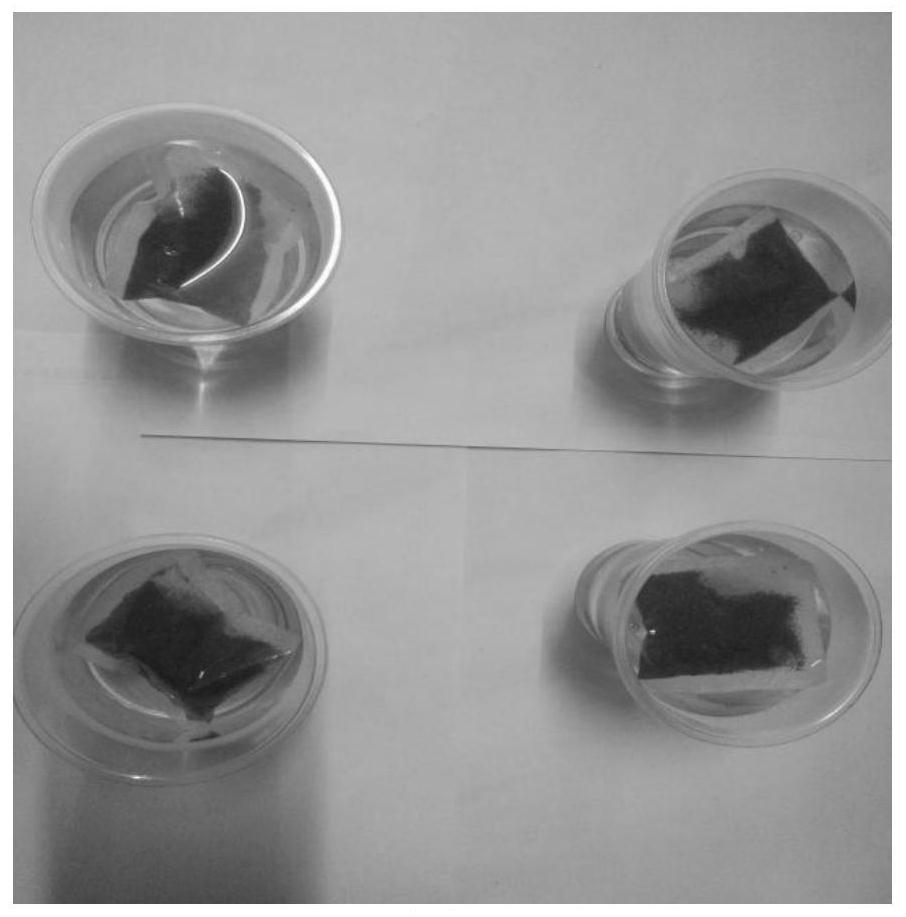A kind of micrococcus and its application and method in the preparation of post-fermented tea of Xupu Yao tea
A technology of micrococcus and fermented tea, applied in bacteria, tea substitutes, etc., can solve problems such as failure of hairy tea, achieve the effects of convenient brewing, unique flavor, and avoid gastrointestinal irritation
- Summary
- Abstract
- Description
- Claims
- Application Information
AI Technical Summary
Problems solved by technology
Method used
Image
Examples
Embodiment 1
[0034] The isolation and screening of embodiment 1 micrococcus
[0035] (1) Processing of raw materials (naturally fermented tea): Weigh 5g of Xupu Yao tea naturally fermented tea into a 100mL sterile triangular flask, add 50mL of sterile water, shake for 30min, and obtain 10 -1 diluent; then use a 1 mL pipette to draw 10 -1 Dilute 1 mL, transfer it into a test tube filled with 9 mL of sterile water, oscillate, let the bacteria liquid mix evenly, and serve as 10 -2 Diluent; and so on, serially diluted to make 10 -3 、10 -4 、10 -5 Wait for a series of dilutions.
[0036] (2) Isolate and cultivate micrococci in naturally fermented tea: number the medium plate, and then divide the above-mentioned diluted bacterial solution by 10 -3 、10 -4 、10 -5 Dilute plated. Apply 0.2mL of diluted bacterial solution to each plate, 5 plates for each concentration, and inoculate in the potato agar medium with different dilution numbers, and then spread the bacterial solution evenly on the ...
Embodiment 2
[0059] Embodiment 2 detection method
[0060] 1) Determination of tea moisture content
[0061] The 105°C ± 2°C constant weight method (the first method) in GB / T 8304-2013 "Determination of Tea Moisture" was adopted.
[0062] 2) Determination of theaflavin and thearubigin content, solvent extraction method
[0063] Preparation of reagents: Ethyl acetate: in order to remove free acid and other water-soluble substances, wash with equal volume of distilled water 2-3 times before use; 2.5% sodium bicarbonate: dissolve 2.5g sodium bicarbonate in 100mL water, prepare and use immediately ; Saturated oxalic acid solution: 10.2g oxalic acid solid can be dissolved in 100mL water at 20°C.
[0064] Sample treatment: Accurately weigh 3.00g of tea leaves, add 125mL of boiling water to a 250mL Erlenmeyer flask, extract in a boiling water bath for 10min, stir 2-3 times with a glass rod during this period, after extraction is complete, filter while hot, and cool to room temperature stand-by...
Embodiment 3
[0086] Micrococcus fermented Xupu Yao tea:
[0087] 1. Weigh 100g of Xupu Yao tea, adjust the water content to 40-50%, and put it into a sealed tank;
[0088] 2. Connect the strain QB08 to the liquid culture medium, shake and culture at 37°C for 24 to 48 hours, then transfer 0.4ml of the bacteria liquid to 60ml of new liquid medium again, and cultivate it for 13 hours under the same conditions. The total number of colonies contained in 10 6 -10 7 cfu / ml, centrifuge at 3000rpm for 15 minutes, take the precipitate, add sterile water and insert micrococcus: sterile water into Xupu Yao tea at a material-to-liquid ratio of 1:1.
[0089] 3. The inoculated Xupu Yao tea is sealed with gauze and fermented until the fermentation is complete and then dried.
[0090] Micrococcus fermented tea for 8 days (W): In the above steps, the number of days of fermentation is 8 days.
[0091] Micrococcus fermented tea for 16 days (Q): In the above steps, the number of days of fermentation is 16 ...
PUM
| Property | Measurement | Unit |
|---|---|---|
| particle size | aaaaa | aaaaa |
Abstract
Description
Claims
Application Information
 Login to View More
Login to View More - R&D
- Intellectual Property
- Life Sciences
- Materials
- Tech Scout
- Unparalleled Data Quality
- Higher Quality Content
- 60% Fewer Hallucinations
Browse by: Latest US Patents, China's latest patents, Technical Efficacy Thesaurus, Application Domain, Technology Topic, Popular Technical Reports.
© 2025 PatSnap. All rights reserved.Legal|Privacy policy|Modern Slavery Act Transparency Statement|Sitemap|About US| Contact US: help@patsnap.com



